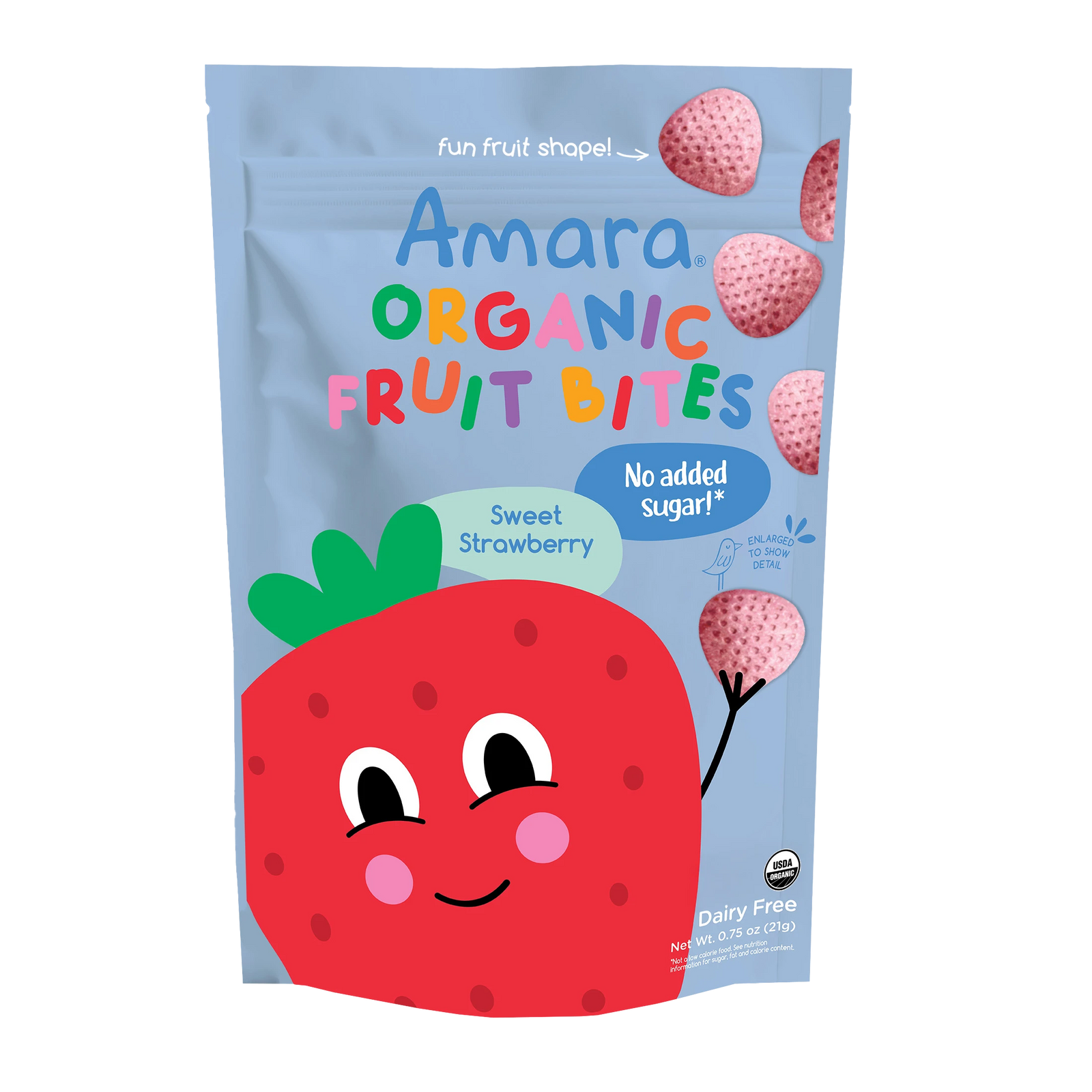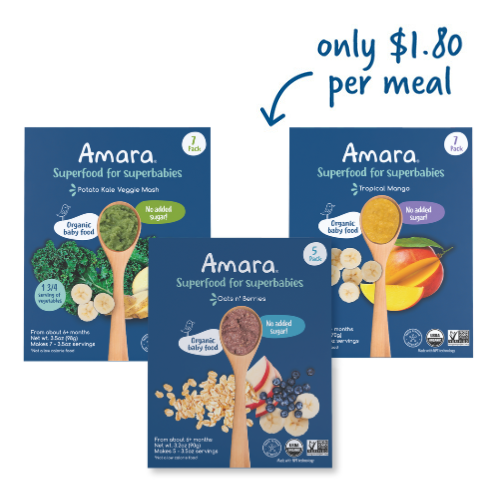
Single-Foods vs. Blended Purees — What's Best for Baby?
We get this question all the time — and I remember being so confused about it when I was starting solids with my two children. Here’s everything you need to know:
If you just want the one-line answer, know this: you do not need to offer one food at a time for every food — you can and should feel great about starting solids with both single foods and mixed-food blends.
If (like me), you like to know a little bit about the backstory, andwhy, then read on…
Historically, medical organizations have advised offering new foods one at a time — and waiting in between — because of the possibility of food allergies. The reasoning is that the “wait period” affords parents time to notice whether a baby reacts to any foods, and can thus clue you in to any possible allergies.
This sounds sensible enough, but in reality,this doesn’t really align with actual practice.As one pediatrician-mom explained it: “This is one of those ‘we’ve always done it this way, but we don’t have evidence to back it up’ recommendations.” Food allergy symptoms usually appear quickly — as in, within minutes (and up to, at max, one hour later) — so there’s no need to wait long periods between new foods, and singling foods out one-by-one doesn’t necessarily give you any advantage.
Furthermore, as we continue to learn more about how important it is for babies to try a wide variety of tastes, flavors, and textures in the first years of life, the kind of strict scheduling that the “one food at a time” recommendations implicitly demand wouldgreatly limit the number of foods a baby would be able to try — and that’s a major loss for everyone. (Seriously, I charted this out once on a calendar, and it was pretty astonishing to see on paper…)
In fact, the most recent Dietary Guidelines for Americans state that babies should consume a “nutrient-dense, diverse diet,” including foods from a variety of food groups (see p.60).These guidelines emphasize variety and diversity, and they say nothing about feeding foods one at a time. Even pediatricians and feeding experts now generally treat the old-school advice as, frankly, dated.
Most families do indeed feed their babies all kinds of different foods on any given day — and around the world, this is also true. Some families do opt to take a more “by the book” approach when introducing the “big 8” allergens (that is, the most common allergenic food groups: milk, eggs, wheat, soy, tree nuts, peanuts, fish, and shellfish), but unless your doctor has specifically advised you to offer single foods one at a time, there really isn’t any reason to do so… and in fact it may result in your baby missing out on a whole slew of chances to taste and experience different foods.
In truth, there are great reasons to offer your babyboth single-food purees and blended ones. That’s why we at Amara offer both! We know that the first years of life are a critical time in the development of eating habits and taste preferences — it’s so important for little ones to experience the joy of tasting both single foods on their own as well as carefully curated pairings. All of our baby purees have the same taste, nutrients, and textures as real foods (in fact, that’s exactly what they are!), and every one of our blended purees was designed by both a chef and a team of nutrition experts to deliver the same quality, nutrition, and flavor as a homemade meal without any of the fuss.Plus, Amara’s baby food is free of the top 8 allergens and designed so that you can adjust the texture to the consistency that's right for your baby.Check out our full line of organic baby food purees here!








Leave A Comment